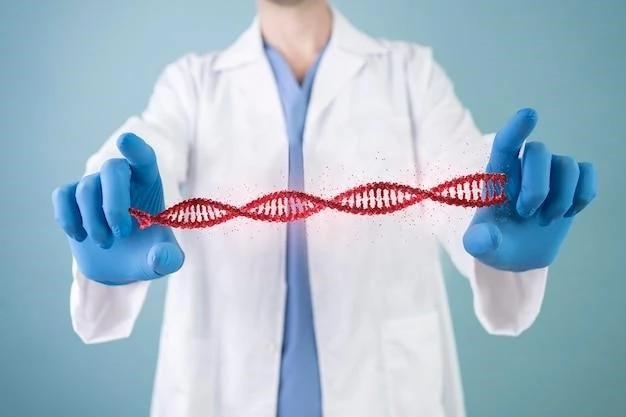Disease ౼ Ectodermal Dysplasia, Hypohidrotic, Autosomal Recessive
When dealing with Ectodermal Dysplasia, understanding the genetic basis is crucial. This inherited condition affects the ectoderm, leading to abnormal development of sweat glands, teeth, hair, nails, and skin. Mutations in chromosomal genes result in autosomal recessive inheritance, where homozygous individuals display symptoms.
Introduction to Ectodermal Dysplasia
Ectodermal dysplasia is a genetic disorder characterized by abnormal development of structures derived from the ectoderm. This includes sweat glands, teeth, hair, nails, and skin. In the autosomal recessive form, both parents must carry the mutated gene for a child to inherit the condition.
Individuals with this condition may experience a range of symptoms affecting their sweat glands, leading to decreased ability to regulate body temperature. Dental anomalies like missing or malformed teeth are common. Hair, nails, and skin may also show abnormalities.
Diagnosis involves genetic testing to identify the specific mutations causing the disorder. Management focuses on addressing individual symptoms, such as dental implants for missing teeth or sweat gland transplants to improve sweating capacity. Early intervention can help improve quality of life for affected individuals.
Genetic counseling is important for families with a history of ectodermal dysplasia to understand the risks of passing the condition to future generations. Counselors provide information about the inheritance pattern, recurrence risks, and available testing options to make informed family planning decisions.
Understanding the Genetic Basis
Ectodermal dysplasia, specifically the hypohidrotic autosomal recessive form, is caused by mutations in genes that are crucial for ectodermal development. These mutations result in the abnormal formation of sweat glands, teeth, hair, nails, and skin.
Individuals with this inherited condition inherit two copies of the mutated gene, one from each parent, known as being homozygous for the condition. The mutated genes disrupt normal ectodermal development, leading to the characteristic symptoms associated with ectodermal dysplasia.
Genetic testing is essential in diagnosing ectodermal dysplasia and identifying the specific genetic mutations responsible for the disorder. Understanding the genetic basis of the condition can help healthcare providers tailor treatment and management strategies to address the individual needs of each patient.
It is important for individuals with ectodermal dysplasia and their families to seek genetic counseling to understand the inheritance pattern, risks of passing the condition to future generations, and available testing options for family members. Genetic counselors can provide valuable information and support in navigating the genetic basis of this disorder.
Symptoms and Diagnosis
Ectodermal dysplasia presents with a variety of symptoms affecting structures derived from the ectoderm. Common symptoms include abnormal development of sweat glands, leading to decreased ability to sweat and regulate body temperature. Dental anomalies such as missing or malformed teeth are often observed.
Individuals with this condition may also exhibit abnormalities in hair, nails, and skin. Diagnosis of ectodermal dysplasia involves a thorough evaluation of clinical symptoms and genetic testing to identify the specific mutations responsible for the disorder.
Early detection and diagnosis of ectodermal dysplasia are crucial in initiating appropriate treatment and management strategies to address the specific symptoms experienced by each individual. Healthcare providers may recommend interventions such as dental implants for missing teeth or sweat gland transplants to improve sweating capacity.
If you or a family member are displaying symptoms suggestive of ectodermal dysplasia, it is important to seek evaluation by a healthcare professional. A timely and accurate diagnosis can guide personalized treatment plans and improve the overall quality of life for individuals affected by this genetic disorder.

Treatment and Management
Managing ectodermal dysplasia involves addressing the specific symptoms experienced by individuals affected by this genetic disorder. Treatment options are tailored to improve quality of life and functional outcomes. Dental anomalies, such as missing or malformed teeth, can often be addressed with dental implants to restore proper function and aesthetics.
For individuals with sweat gland abnormalities, sweat gland transplants may be considered to help improve sweating capacity and prevent complications related to overheating. Skin, hair, and nail abnormalities can be managed through dermatological interventions aimed at maintaining skin health and addressing cosmetic concerns.
Regular follow-up visits with healthcare providers are essential to monitor the progression of symptoms and adjust treatment plans as needed. Collaborating with a multidisciplinary healthcare team can ensure comprehensive care and support for individuals with ectodermal dysplasia.
Exploring treatment options and engaging in proactive management strategies can significantly impact the overall well-being of individuals living with ectodermal dysplasia. By actively participating in their treatment and management plan, individuals can optimize their health outcomes and enhance their quality of life.
Genetic Counseling
Genetic counseling plays a vital role for individuals and families affected by ectodermal dysplasia, particularly the autosomal recessive form. It offers valuable support and information regarding the genetic basis of the condition, inheritance patterns, and potential risks for future generations.
Genetic counselors can help families understand the implications of carrying the mutated genes and the likelihood of passing the condition to their children. They provide guidance on available testing options to identify carriers within the family and offer strategies for family planning based on individual risks and preferences.
Through genetic counseling, families can make informed decisions about genetic testing, early intervention strategies, and long-term management of ectodermal dysplasia. It empowers individuals to take control of their health and navigate the complexities of living with an inherited genetic disorder.
If you have a family history of ectodermal dysplasia or have been diagnosed with the condition, seeking genetic counseling can provide clarity, emotional support, and practical guidance for managing the genetic aspects of the disorder. Genetic counselors work collaboratively with healthcare providers to ensure comprehensive care and support for individuals and families affected by this condition.
Conclusion
In conclusion, ectodermal dysplasia, specifically the hypohidrotic autosomal recessive form, is a genetic disorder that affects the development of structures derived from the ectoderm. Individuals with this condition may experience symptoms related to sweat glands, teeth, hair, nails, and skin.
Understanding the genetic basis of ectodermal dysplasia is essential in diagnosing the condition and guiding personalized treatment and management strategies. Genetic counseling plays a crucial role in helping affected individuals and families navigate the complexities of inherited genetic disorders.
By seeking early diagnosis, exploring appropriate treatment options, and engaging in genetic counseling, individuals with ectodermal dysplasia can optimize their health outcomes and enhance their quality of life. Collaborating with healthcare providers and genetic counselors can provide valuable support and resources for managing the challenges associated with this rare genetic disorder.
Overall, by raising awareness, promoting early intervention, and fostering a multidisciplinary approach to care, individuals with ectodermal dysplasia can lead fulfilling lives while effectively managing the impact of the condition on their health and well-being.
